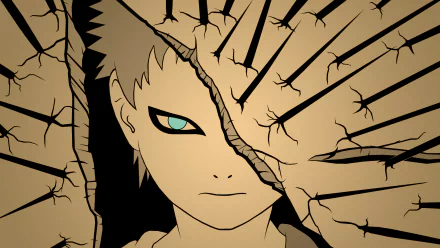Gaara: The Evolution of a Shinobi Legend
Introduction
In the vibrant world of Naruto, Gaara stands as a testament to the complexities of the human spirit and the transformative power of connection. Created by the visionary Masashi Kishimoto, Gaara debuts as an antagonist, a character shaped by a tumultuous past and the weight of a destiny thrust upon him. This article delves into the multifaceted evolution of Gaara, exploring his origins, development, and eventual ascension to the revered position of the Fifth Kazekage.

Origins and Demons
Gaara’s journey commences with a tragic narrative intricately woven by Kishimoto. Born as the son of Sunagakure’s Fourth Kazekage, Rasa, Gaara is fated to carry the burden of being a demon’s host, a living weapon meant to restore the village’s glory. However, the convergence of societal ostracization, his struggle to control the Tailed Beast within, and the haunting belief that his own mother deemed him a curse catalyzes Gaara’s descent into a ruthless killer.
Redemption through Connection
It is in the crucible of adversity that Gaara encounters Naruto Uzumaki, the eponymous hero of the series. Their parallel backgrounds, both marked by rejection and isolation, set the stage for a profound transformation. Through the lens of Kishimoto’s narrative mastery, Gaara’s journey from antagonist to the Fifth Kazekage becomes a poignant tale of redemption and self-discovery.
The Design Evolution
Kishimoto’s artistic prowess is not confined to storytelling alone. Gaara’s physical manifestation undergoes significant evolution, mirroring the internal changes in his character. From early designs as Kumomaru to the final iteration, where the Tanuki-inspired aesthetics find resonance, Gaara’s visual narrative is a testament to Kishimoto’s commitment to character depth.
Gaara’s Influence Beyond the Pages
Gaara’s impact extends beyond the manga and anime realms. His character elicits praise from both critics and fans alike, with many hailing Naruto’s confrontation with Gaara as a pinnacle moment in the series. Gaara consistently ranks high in popularity polls, a testament to the character’s enduring appeal.
Creation and Conception
Kishimoto’s insights into Gaara’s creation shed light on the meticulous thought process behind the character. Originally conceived as Kumomaru and later considered for the name Kotarou Fuuma, Gaara’s evolution culminates in a name that symbolizes both his affinity for sand and an unexpected touch of love, as indicated by the kanji in his head.
Gaara’s Role in the Naruto Universe
Gaara’s narrative extends beyond the confines of the Naruto series. In Part II, his role as the Fifth Kazekage, the confrontation with the Akatsuki, and the emotional revelations about his past paint a vivid picture of his pivotal contribution to the overarching storyline.
Gaara in Other Media
Beyond the anime and manga, Gaara leaves an indelible mark in other narratives. From feature films like “Legend of the Stone of Gelel” to the third original video animation, Gaara’s presence remains integral, showcasing the character’s versatility and enduring popularity.
Gaara’s Legacy
As the series concludes, Gaara’s legacy persists. Adopting Shinki as his son and maintaining an active role as the Kazekage, Gaara’s journey encapsulates the quintessence of Naruto’s thematic exploration – the triumph of love over hatred.
Conclusion
In the tapestry of Naruto’s rich narrative, Gaara emerges not only as a compelling character but as a symbol of resilience, redemption, and the indomitable power of human connection. Masashi Kishimoto’s creation transcends the confines of a fictional world, leaving an indelible imprint on the hearts of fans who have witnessed Gaara’s evolution from a troubled antagonist to a revered shinobi legend.
